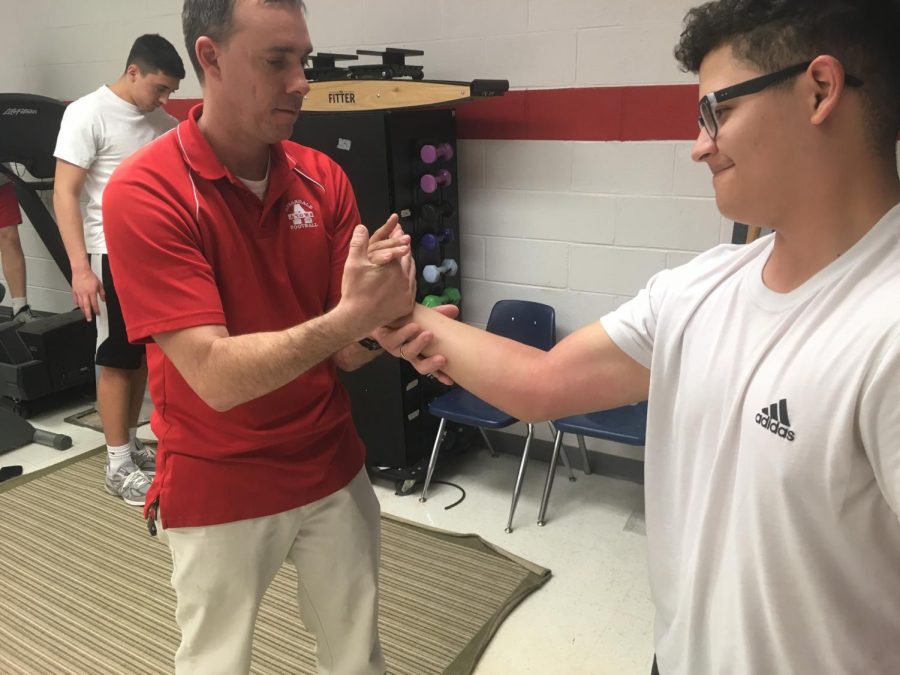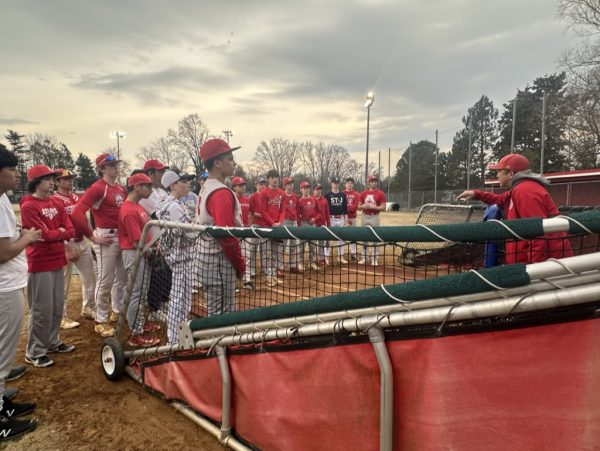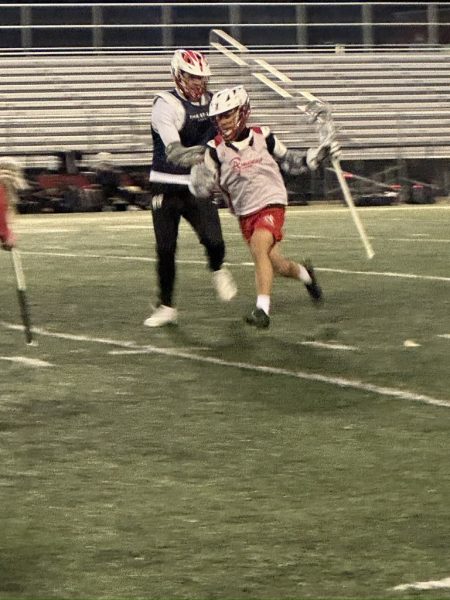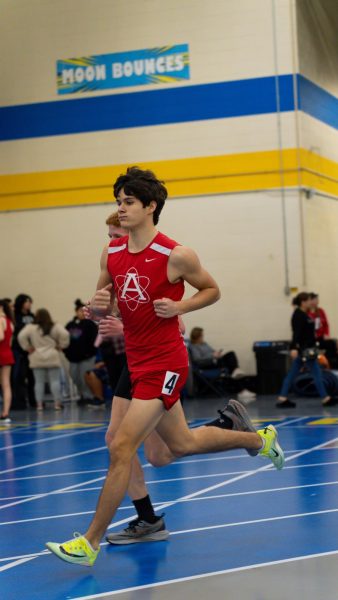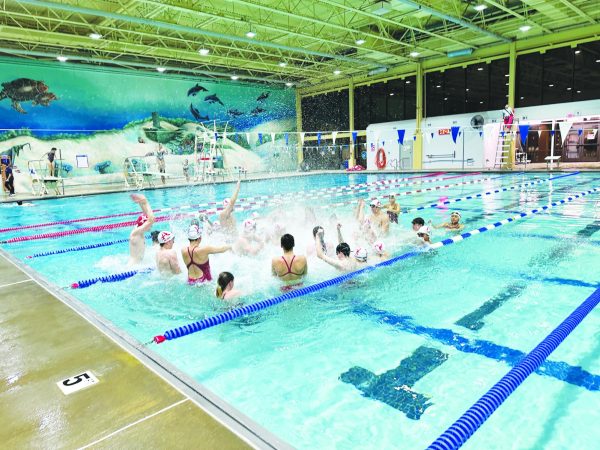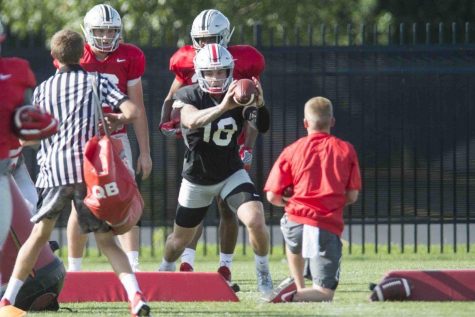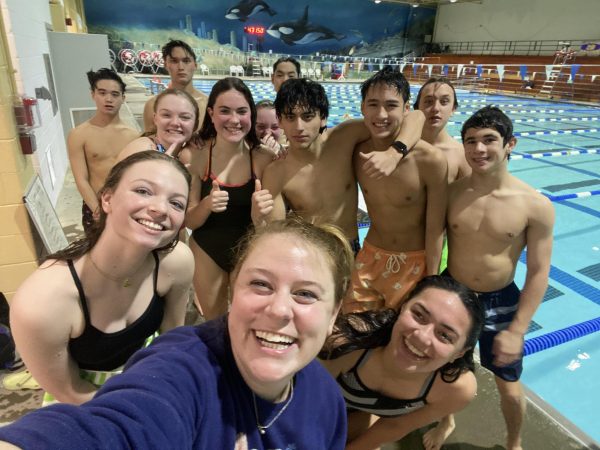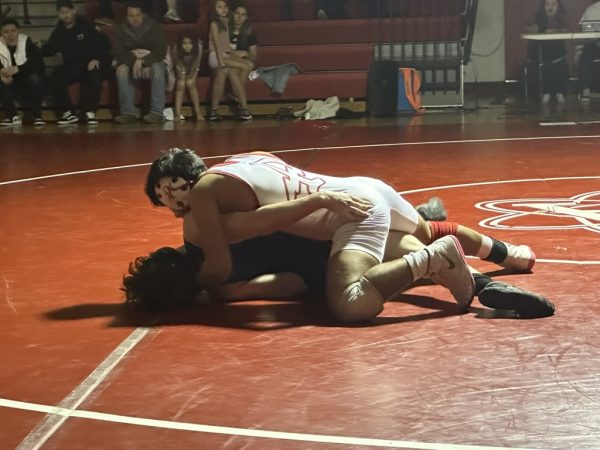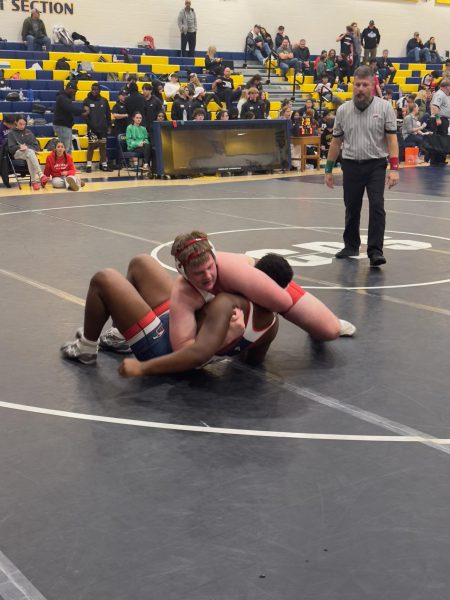Athletic trainers heal injured
A look at the student athlete recovery process
Athletic trainer Ryan Hughes helps freshman Romeo Velez with a wrist injury. “I hurt my wrist playing baseball,” Velez said, “Mr. Hughes really helped me. He used a heating pad and a special technique to heal it.”
In high school, athletic trainers play an important role in athletics, as they are professionally trained health care personnel who work to diagnose, treat and prevent injuries. At AHS, there are two athletic trainers: Kathleen Ayers and Ryan Hughes.
Hughes is the head athletic trainer and he covers the afternoon and evening shift, including all of the home games throughout the year. Hughes’ daily duties include completing paperwork and getting the athletic training room set up. He makes sure it is ready for the end of the day so that students with injuries can come in and receive medical attention.
Freshman Ishaat Hannan was injured in a game and sought assistance from the trainers.
“Athletic trainers are important because they’ll provide you with the care you need when a doctor isn’t available,” Hannan said.
Hughes helps students by diagnosing and treating their injuries and also by demonstrating how students should complete rehabilitation.
In addition to Hughes, Ayers also works diligently to ensure the wellbeing of all the students, especially those who get injured.
The process for evaluating student injuries is unique for each particular instance.
“When a student gets injured, they come and see us in the athletic training room, where they are evaluated in order to determine what exactly is wrong with them,” Hughes said. “Then we sort out what types of treatments will best suit his injury.”
“It’s better to have someone be able to check your injury rather than having no one check it at the moment,” Hannan said.
Both Ayers and Hughes also find physicians and specialists who will work to help the athletes with their specific injuries. Equally important, athletic trainers work with the entire athletic department. Including coaches, to adhere by safety protocols, educate both students and teachers on certain health issues, such as weight loss and weight gain, which can significantly affect the performance of athletes.
Athletic trainers provide student-athletes with holistic medical care, meaning that the trainers apply an approach that takes into account both the internal and external factors in order to diagnose a student.
As the number of students who participate in sports increases, the importance of athletic trainers in high school in general, has drastically increased. Furthermore, the fact that athletic trainers provide immediate medical attention is crucial, especially in cases where long-term implications, if not properly followed, may have severe repercussions for the athlete.
“Athletic trainers are important because they help us and they give us good rehabilitation to recover,” senior Diana Silva said. “They’re always here when we need them, and they also give us physical therapy equipment to use so that we can increase faster.”
The process for evaluating student injuries is unique for each particular instance.
According to the National Athletic Trainers’ Association, 1.6 – 3.8 million concussions occur in both high school and colleges across America.
“The most common injury that students get, in the entire campus is probably the lateral ankle sprain, which we immediately treat with ice in order to reduce and control both the swelling and inflammation,” Hughes said. “The next day, we will start up by introducing some range-of-motion and light exercises to increase blood flow to help them recover from their injuries so they can get back to playing in practices and games sooner.”
Throughout his experience, Hughes has seen some severe injuries occur.
“I have seen many severe neck and spinal injuries that happened during football games. I have also seen a couple of broken lower legs from rugby,” Hughes said. “These injuries require a 911 call, as they have to cared for immediately.”
Practicing proper technique, ensuring to warm up, cool down, and stretch, and staying hydrated are all known to reduce the risk of getting injured for athletes everywhere. Stretching, warming up, and cooling down are exceedingly important due to the fact that they help to loosen up the muscles and prepare them for play.
Both static and dynamic stretching are encouraged and implemented. Static stretches work to improve the end-range movement of a muscle and dynamic stretches help improve mobility through a range-of-motion manner.
In addition, sleep is also crucial to preventing injury, as a lack of sleep and muscle fatigue increase an athlete’s susceptibility to injury. Furthermore, trainers encourage athletes to hydrate before and after practice, as well as promote a healthy, well-balanced diet.
Coaches also recommend the use of proper equipment, such as helmets, pads, and shoes, as well as the implementation of proper technique during practices and games.



